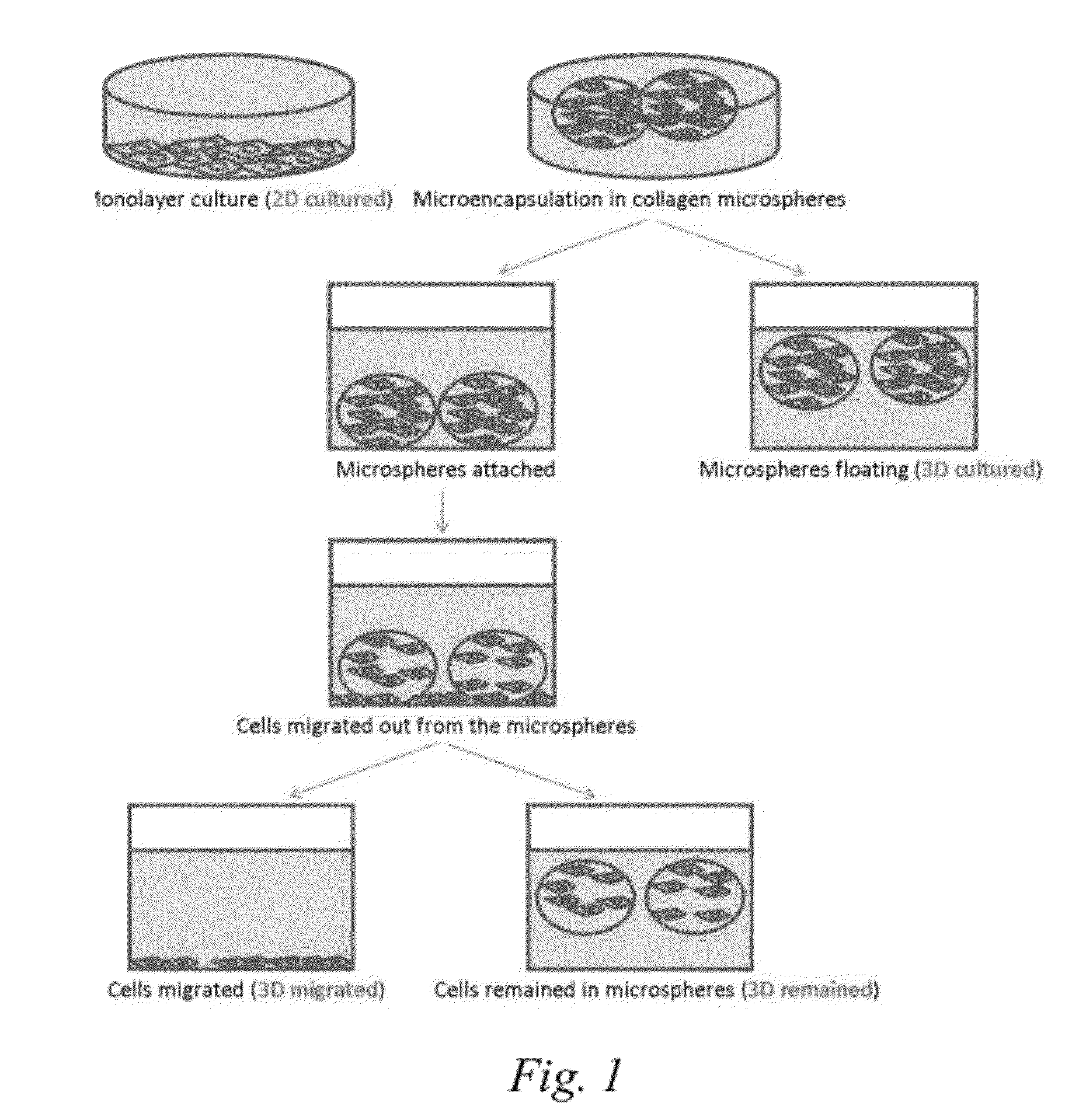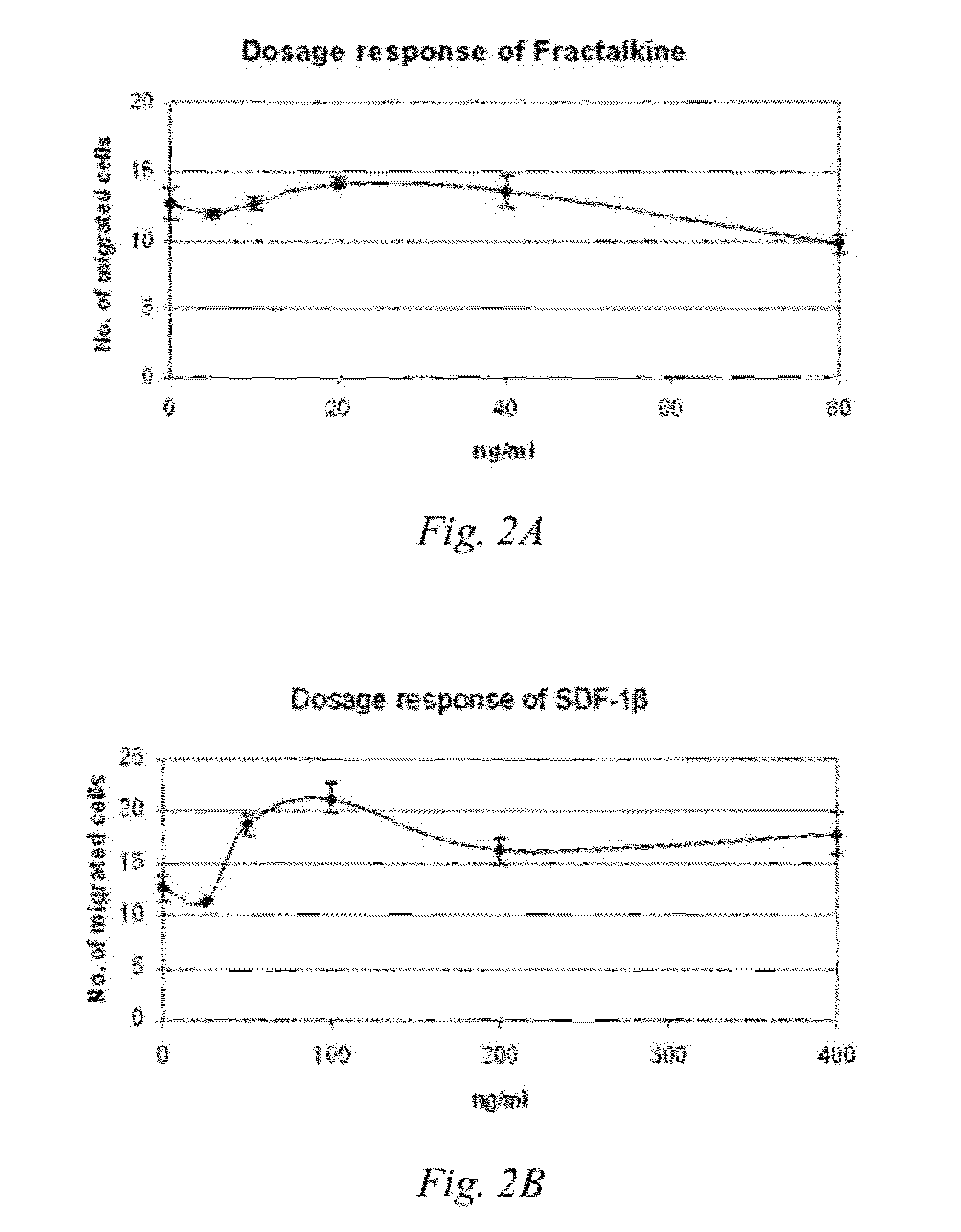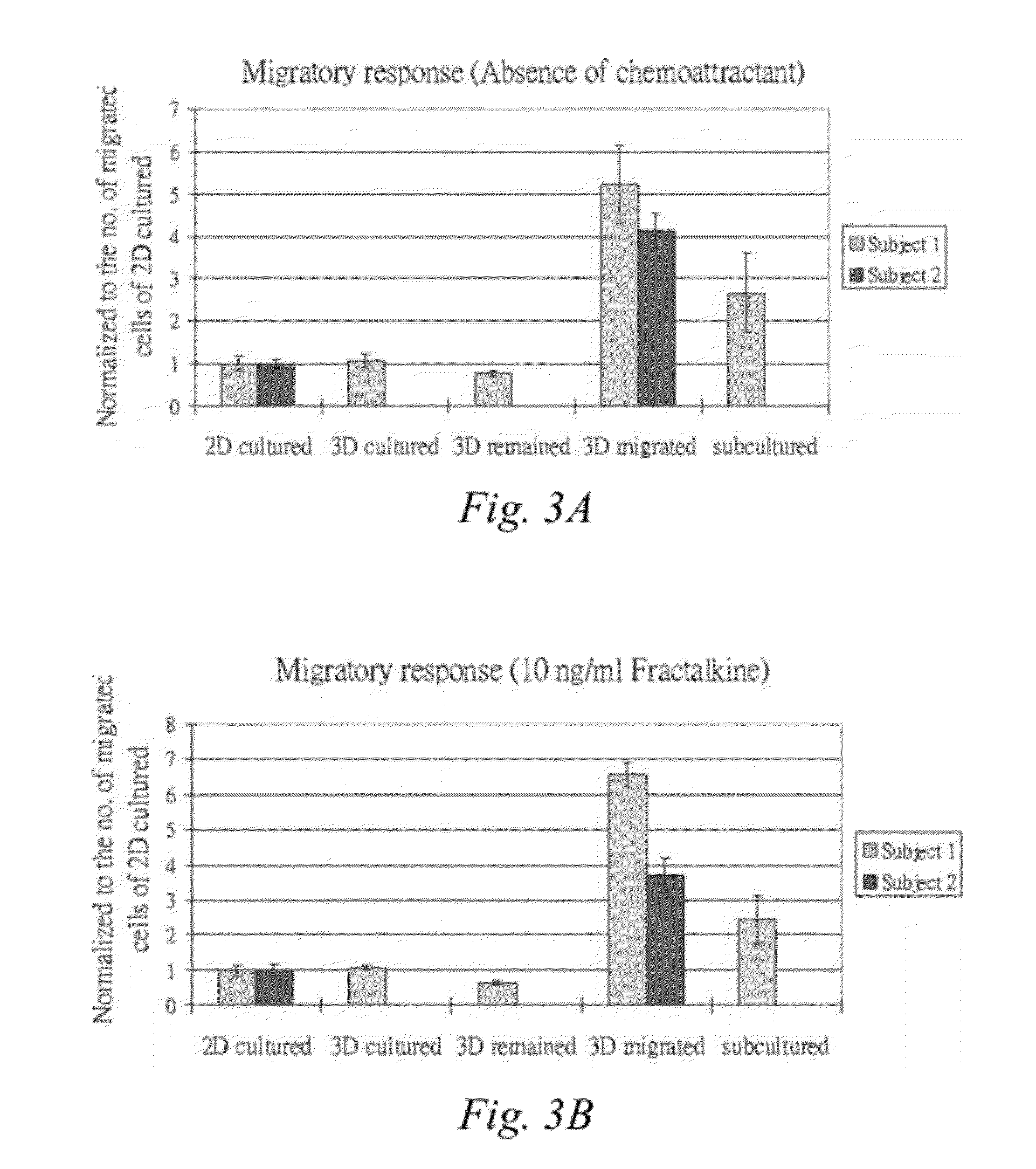Methods to enhance cell migration and engraftment
a cell migration and cell technology, applied in the field of cell engraftment, can solve the problems of less than 5% improvement, too low to generate a significant impact, and insufficient functional outcomes of existing msc therapies, and achieve enhanced in vivo engraftment rate, enhanced spontaneous migration and directional migration of cells, and improved migratory activity
- Summary
- Abstract
- Description
- Claims
- Application Information
AI Technical Summary
Benefits of technology
Problems solved by technology
Method used
Image
Examples
example 1
Microencapsulation of hMSCs Using Collagen Barrier
[0053]Materials and Methods
[0054]Bone marrow aspirates were collected from two healthy bone marrow donors (Subject 1 and 2) with informed consents. hMSCs were cultured in full medium consisting of Dulbecco's modified Eagle's medium-low glucose (DMEM-LG), 10% fetal bovine serum (FBS), 100 U / ml penicillin, 100 mg / ml streptomycin and 1% GlutaMax™ at 37° C. with 5% CO2. Cells at passage 4 were subcultured as traditional 2D (monolayer) cultures. The initial cell seeding density of traditional 2D culture was 6.25×104 per 100 mm tissue culture dish.
[0055]After trypsinization, cells at passage 5 were labeled “2D cultured cells.” Some of these cells were used for subsequent microencapsulation. hMSCs were trypsinized using 0.05% Trypsin-EDTA (Gibco).
[0056]Cells were microencapsulated in a collagen barrier as described by Chan, et al. Biomaterials 28 (2007) 4652-4666. Rat-tail collagen type 1 solution (BD Biosciences) was neutralized by 1N NaOH...
example 2
Transwell Migratory Activities of Different hMSC Subpopulations
[0063]Materials and Methods
[0064]Serum free medium alone or in the presence of either 10 ng / ml Fractalkine (CX3CL1; Peprotech) or 50 ng / ml SDF-10 (CXCL12; Peprotech) in a total volume of 800 μl was added into the lower chamber of a 24-well plate transwell (BD Biosciences). A cell culture insert 8 μm pore size (BD Falcon™ Cell Culture Inserts, catalog #353097) was gently placed into the well. An aliquot of 5×104 hMSCs collected from the different treatment groups of Example 1: 2D cultured cells, 3D cultured cells, 3D remained cells, 3D migrated cells or Subcultured cells, was suspended in 250 μl serum free medium and added into the insert in the upper chamber of the transwell. The cells were then incubated at 37° C. with 5% CO2 for 16 hours.
[0065]The insert was then removed from the well and the non-migrating cells from the upper side of the membrane were removed gently using a cotton bud. The lower side of the membrane w...
example 3
Engraftment of 3D Migrated Cells in Hepatectomized NOD / SCID Mice
[0072]Materials and Methods
[0073]8 week old, 25 gram NOD / SCID mice were anesthetized and then the median, left and caudate lobes of the liver, as well as the gall bladder, were removed, leaving the right lobe of liver. Two to three hours were allowed for the mice to recover after the surgery. After that, the mice were anesthetized again. Cell injection was done via the tail vein. Two million migrated cells suspended in 100 μl 1×PBS were used for cell injection.
[0074]At 48 hours 1 week and 1 month, mice were sacrificed and the liver collected for human cell marker analysis using flow cytometry and immunohistochemistry. For flow cytometry, cells from the harvested liver were isolated by incubating with collagenase for 20 minutes followed by filtering through the cellular sieve (BD Biosciences). The cell suspension was centrifuged and the supernatant was removed. Blood cells in the cell suspension were lysed by incubating ...
PUM
| Property | Measurement | Unit |
|---|---|---|
| concentrations | aaaaa | aaaaa |
| concentrations | aaaaa | aaaaa |
| concentrations | aaaaa | aaaaa |
Abstract
Description
Claims
Application Information
 Login to View More
Login to View More - R&D
- Intellectual Property
- Life Sciences
- Materials
- Tech Scout
- Unparalleled Data Quality
- Higher Quality Content
- 60% Fewer Hallucinations
Browse by: Latest US Patents, China's latest patents, Technical Efficacy Thesaurus, Application Domain, Technology Topic, Popular Technical Reports.
© 2025 PatSnap. All rights reserved.Legal|Privacy policy|Modern Slavery Act Transparency Statement|Sitemap|About US| Contact US: help@patsnap.com



